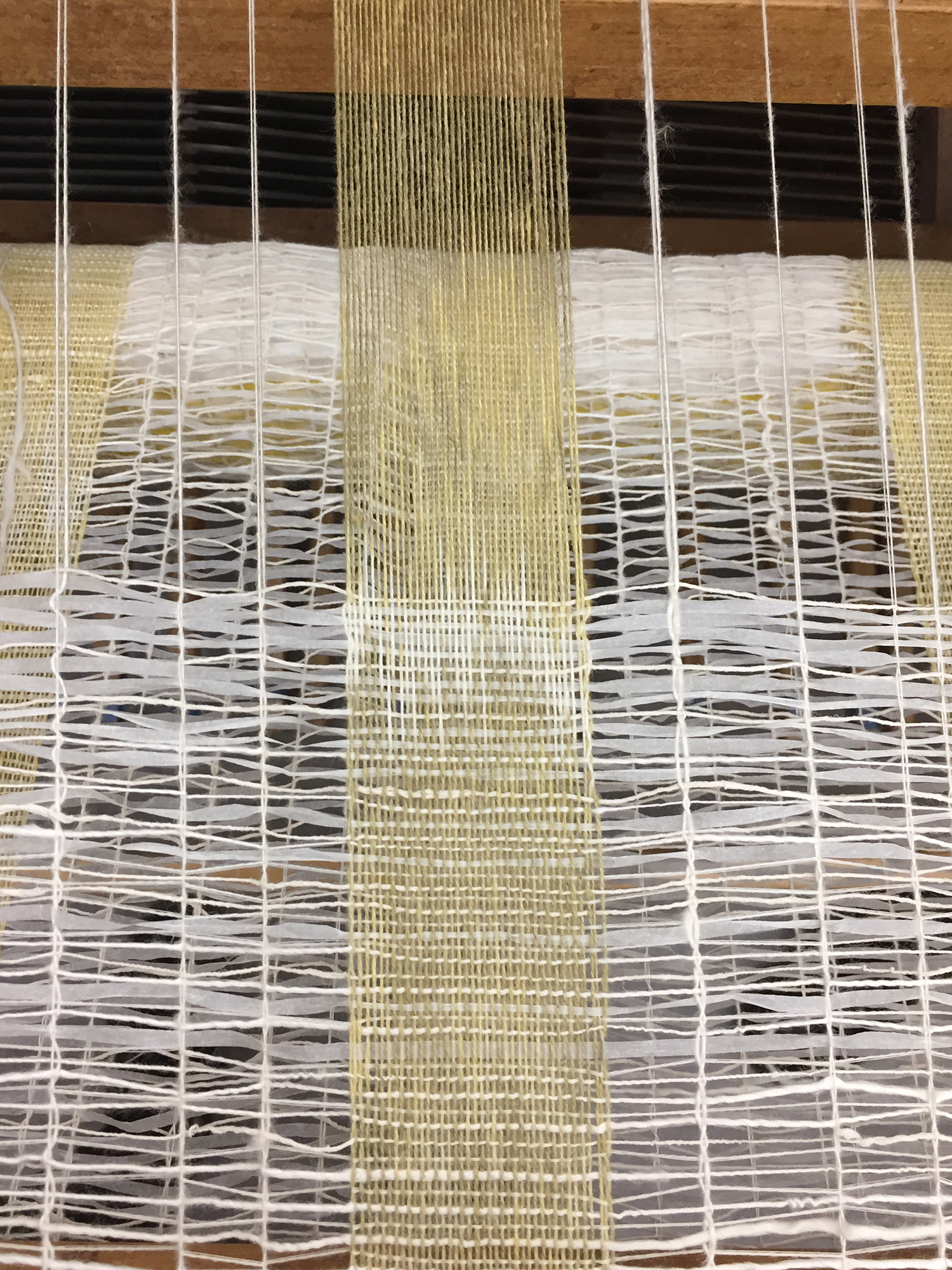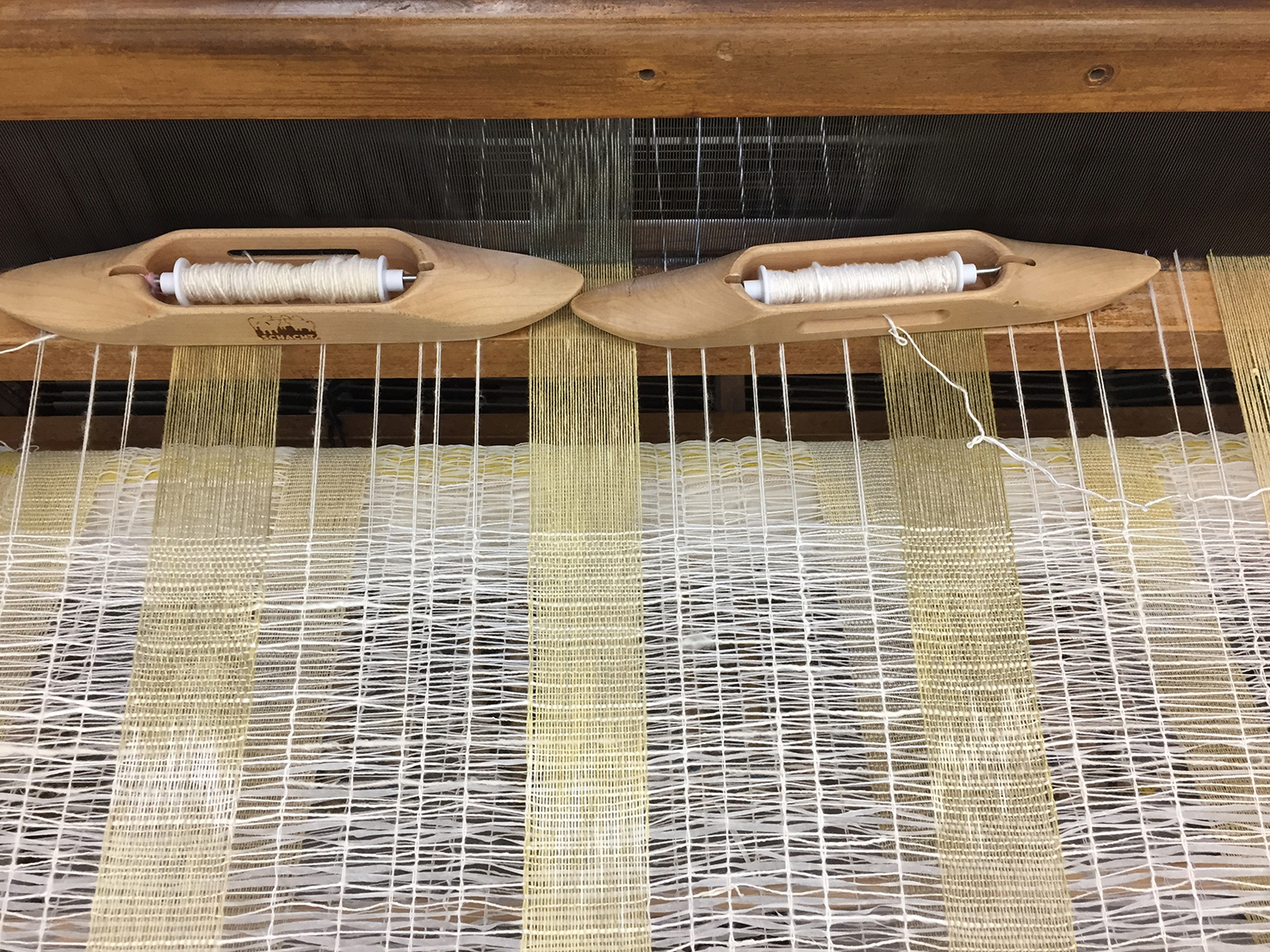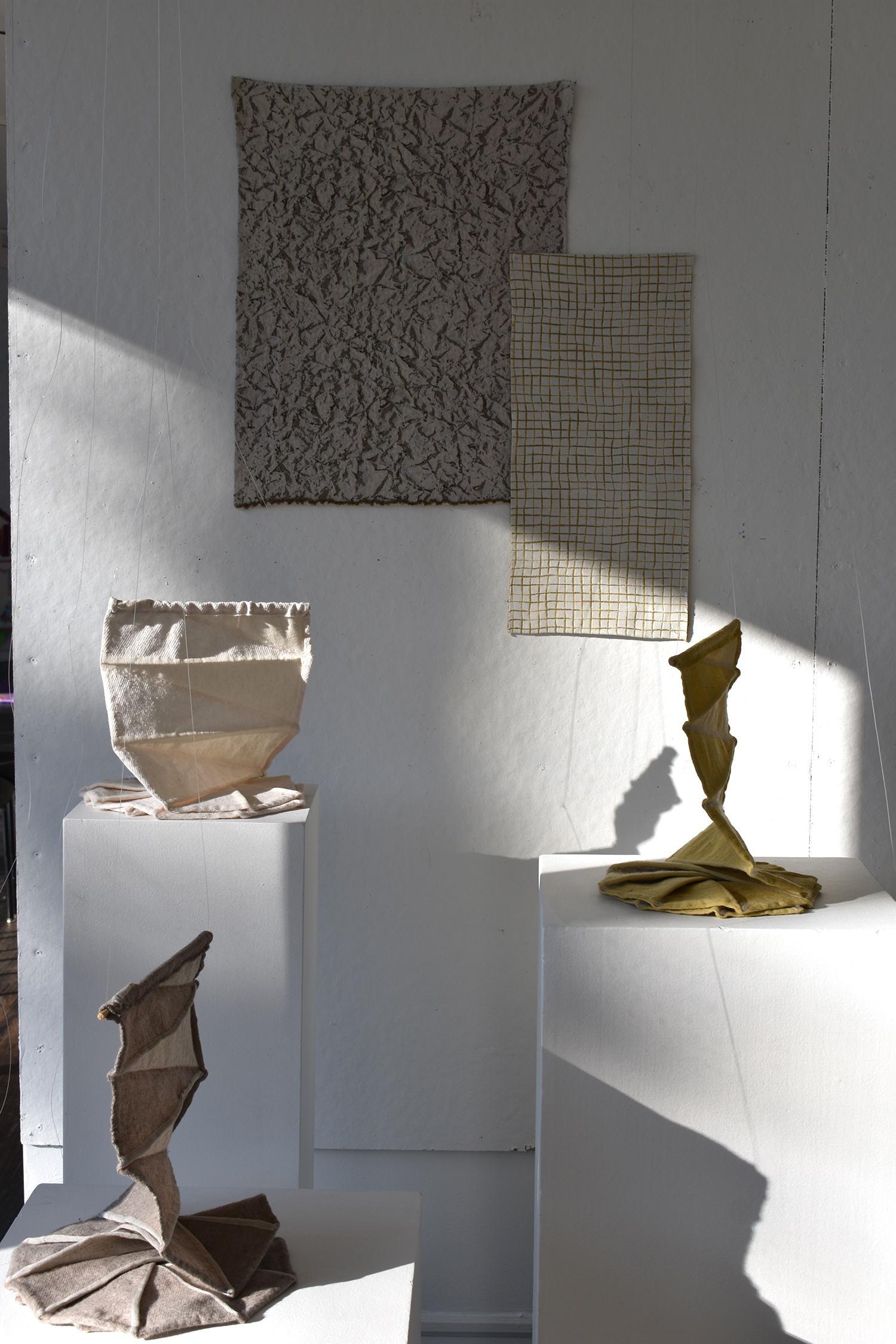GRADUATE THESIS COLLECTION
DECEMBER 2018
shape/
shift
Forces found in nature shift and change the makeup of the Earth. In the epochs before human life, the land and ocean slowly transformed over 4.5 billion years. Pressure created by Earth’s movements caused shores to shift, islands to form, and mountains to rise—all invariably altering the landscape. The same unseen forces that built the Earth are harnessed as an invisible material to create the textiles in Shape Shift. Unpredictability and loss of control from using natural forces as a design element are embraced to create dynamic weavings that move away from a linear woven grid. Gravity, wind, water, pressure, and the force of the body shift weavings into different shapes. These forces are utilized through spinning yarn with a drop spindle; weaving with woven shibori and collapse weave structures that are activated by water and pressure; and allowing gravity to shape delicate weavings floating in space.
In addition to the forces that have continually shaped the Earth, human involvement is now changing the planet at an accelerated rate. Humans, who have only occupied the last 11,700 years on Earth, have effected massive amounts of change disproportionate to their existence in the geologic time scale. Records of the pre-human world remain preserved in layers of strata, telling tales of the deep past. These fossils are clues that keep track of life forms and how the land and sea changed over the great expanse of time before humans.
The world today exists with industrial waste, pollutants, and plastics in the ocean that will be immortalized as modern fossils. Even if these waste materials can be saved from landfills and the ocean to be repurposed as new materials, they are still a part of the narrative of the changing Earth. In Shape Shift new materials are transformed from recycled plastic bags and textile waste into handspun yarn and handmade paper. The unpredictability of found and repurposed materials combined with virgin yarns and natural dyes, woven together in processes that rely on natural forces, creates a collection that depicts the modern fossils of the ever-shifting Earth, with both invisible forces and human impact at work.
HANDSPUN PLASTIC BAG, PAPER, SILK, RECYCLED WOOL, WOOL, AND NETTLE
AND HANDMADE PAPER
self-folding cloth
JACQUARD WOVENS
CRUMPLED PAPER INSPIRATION FOR JACQUARDS
HANDSPINNING PROCESS FOR PLASTIC BAGS
PINK/YELLOW LENO WEAVING
with handspun plastic bag and recycled warp as weft
woven on a RailReed
RIVER ROOM DIVIDER
linen dyed with osage orange, avocado pits, and iron
hand-spun silk, recycled wool, wool, and mulberry paper
linen slit paper yarn and wool
loom-controlled leno and plain weave
36 x 70”
PROCESS IMAGES FOR RIVER ROOM DIVIDER




INITIAL MATERIAL TRIAL
MULBERRY PAPER SPINNING PROCESS
TECHNOFOSSIL WEAVING
linen dyed with osage orange, avocado pits, and iron warp
handspun plastic bag, osage orange dyed handspun printed paper from early thesis drafts, and linen weft
INSTALLATION IMAGES FROM THESIS SHOW























































